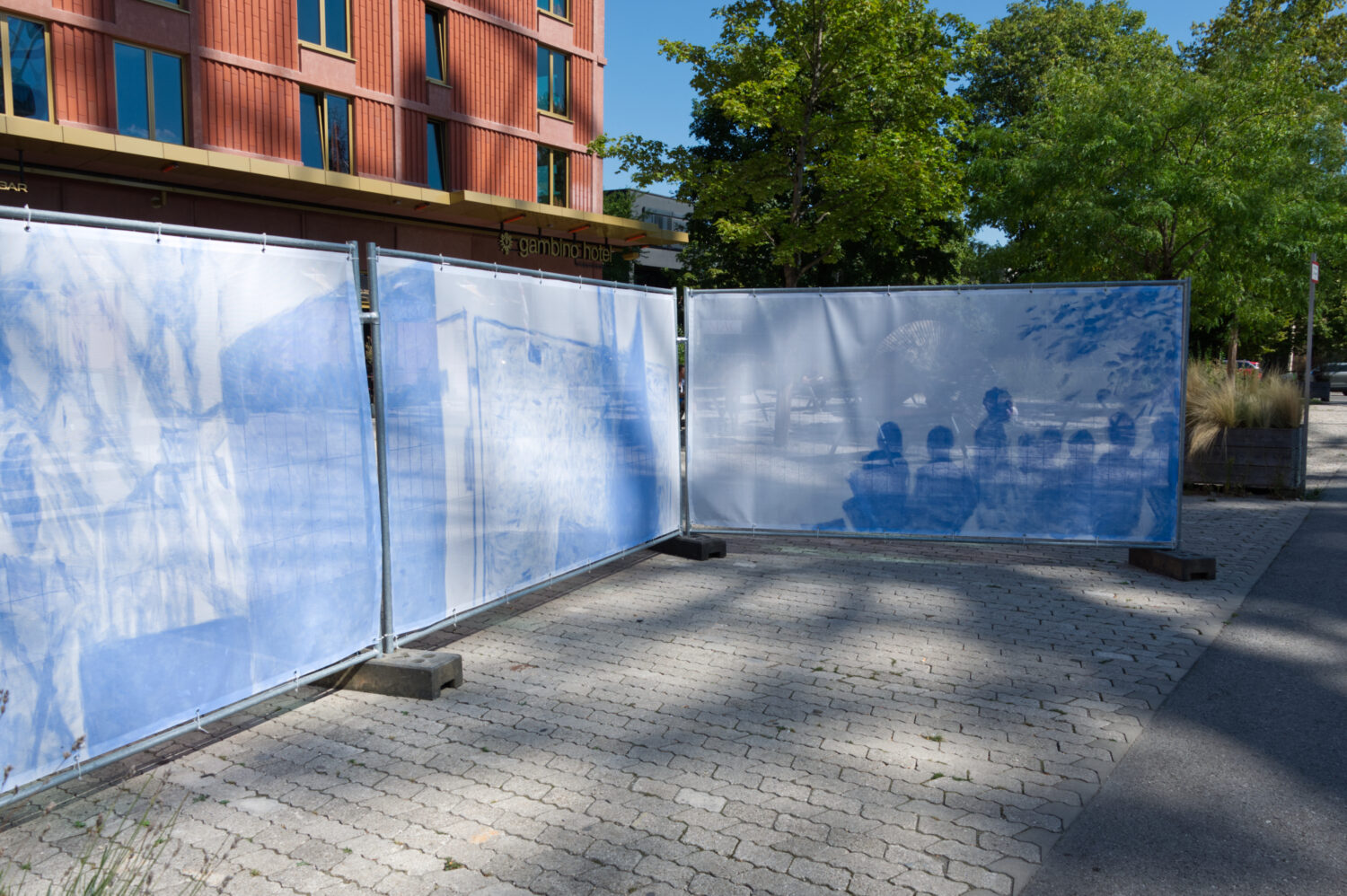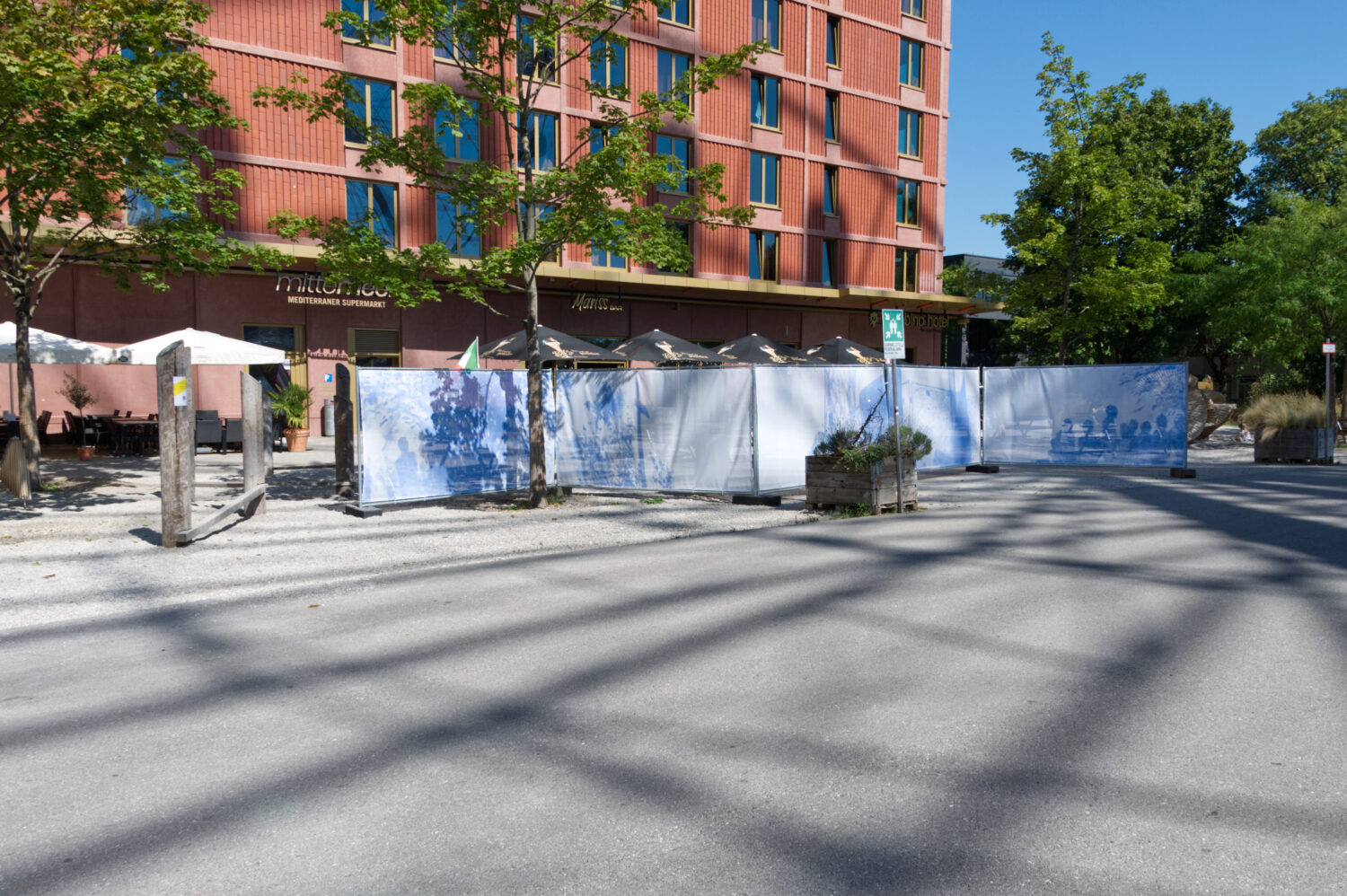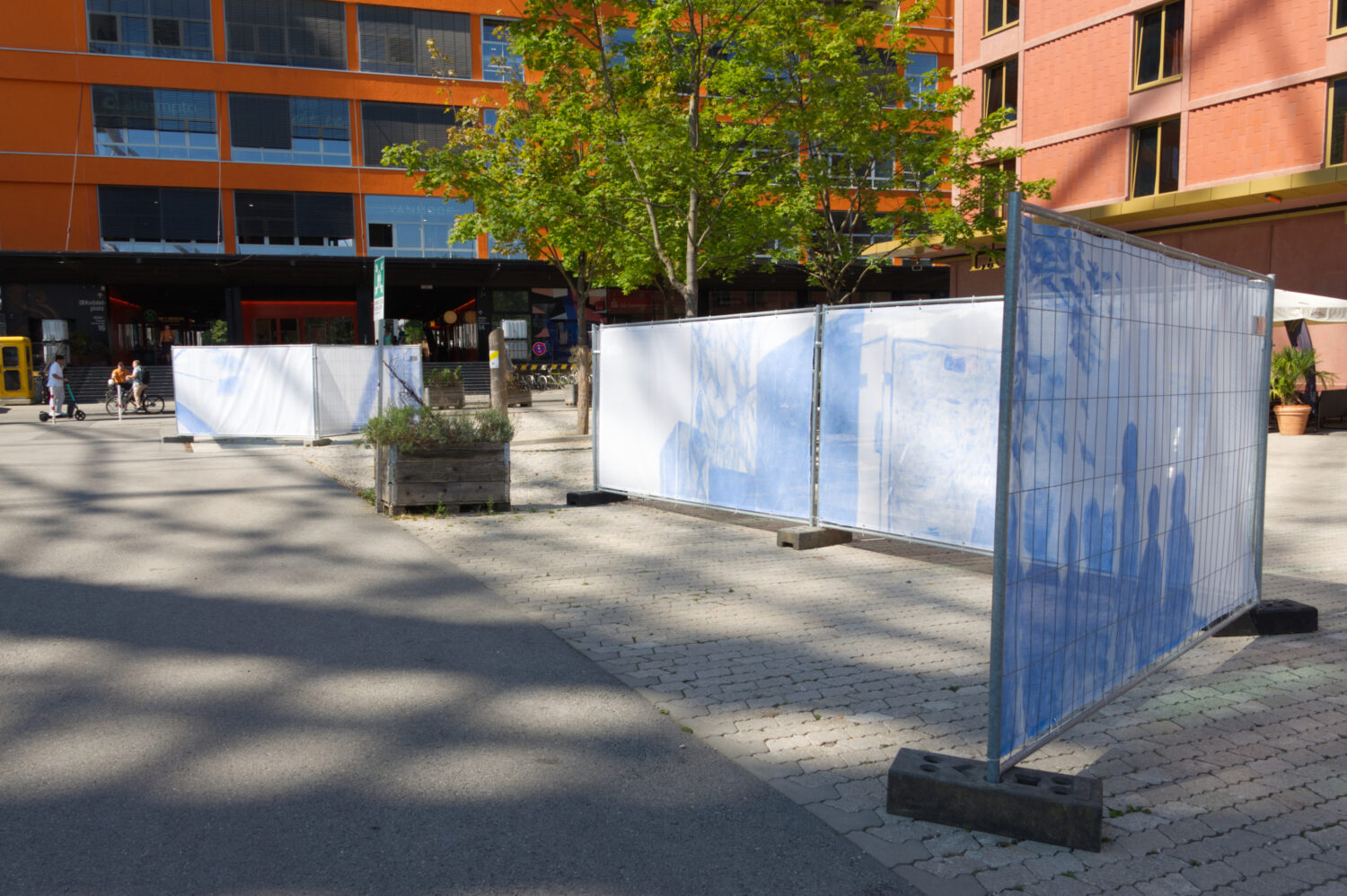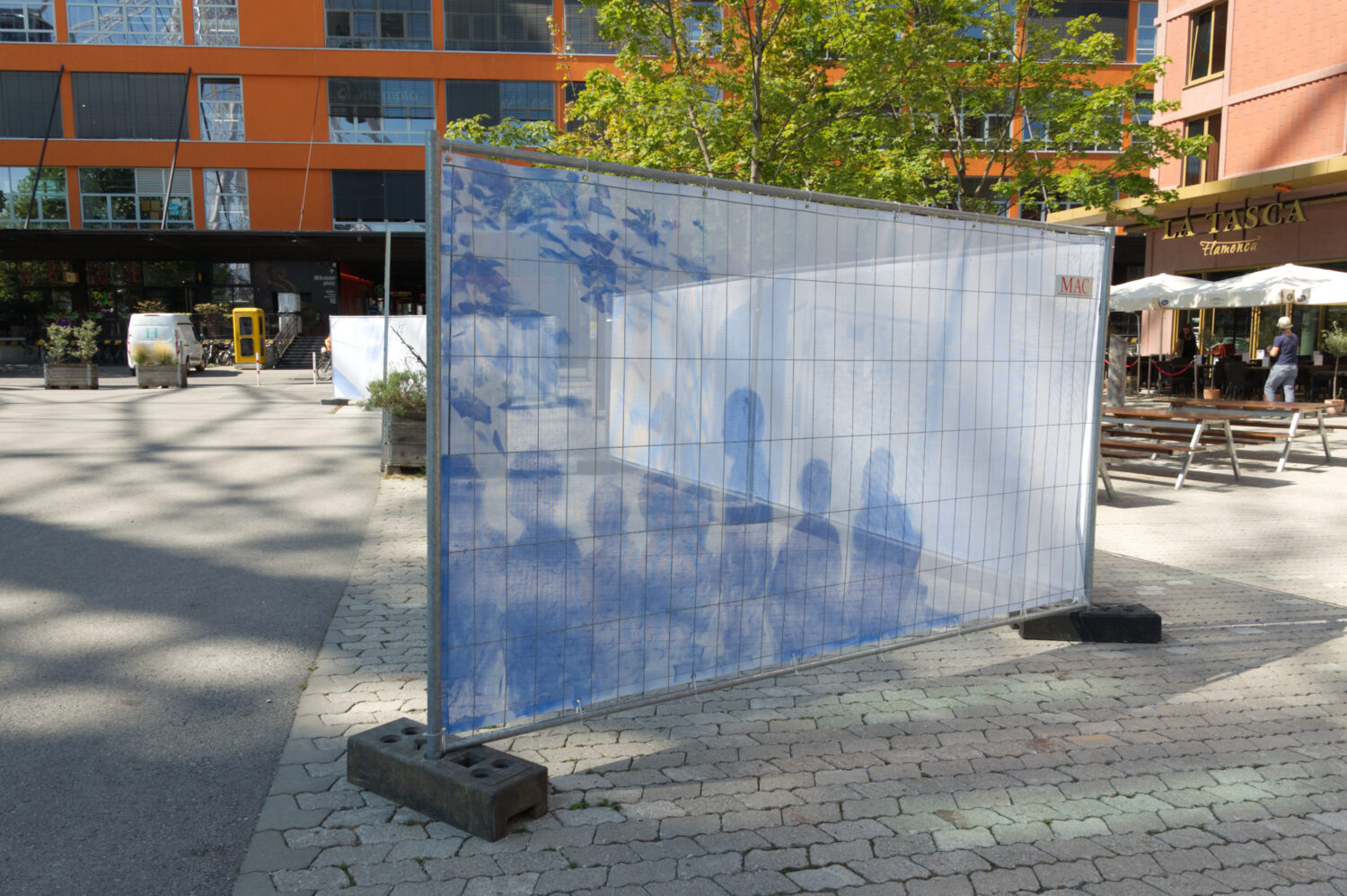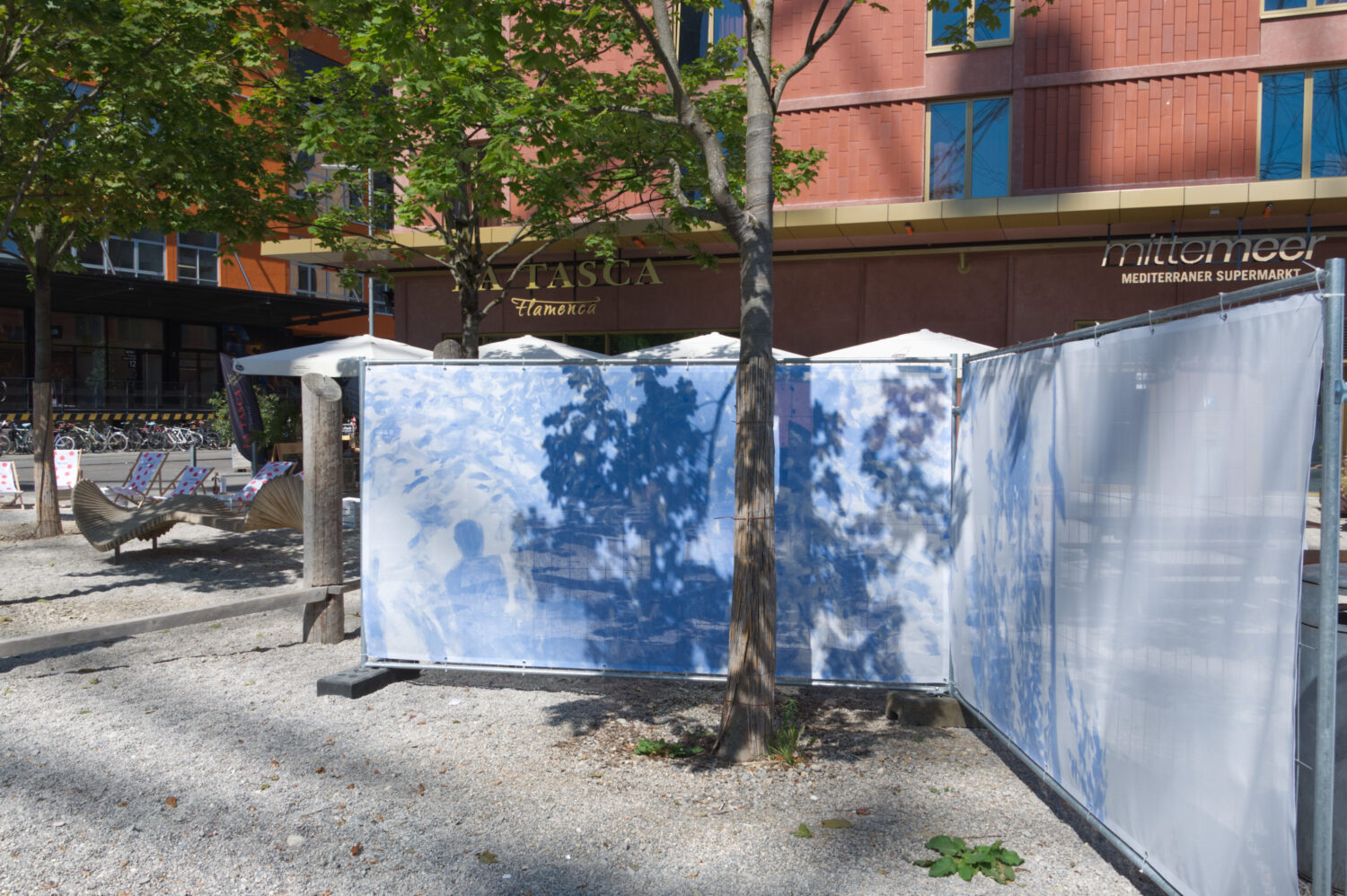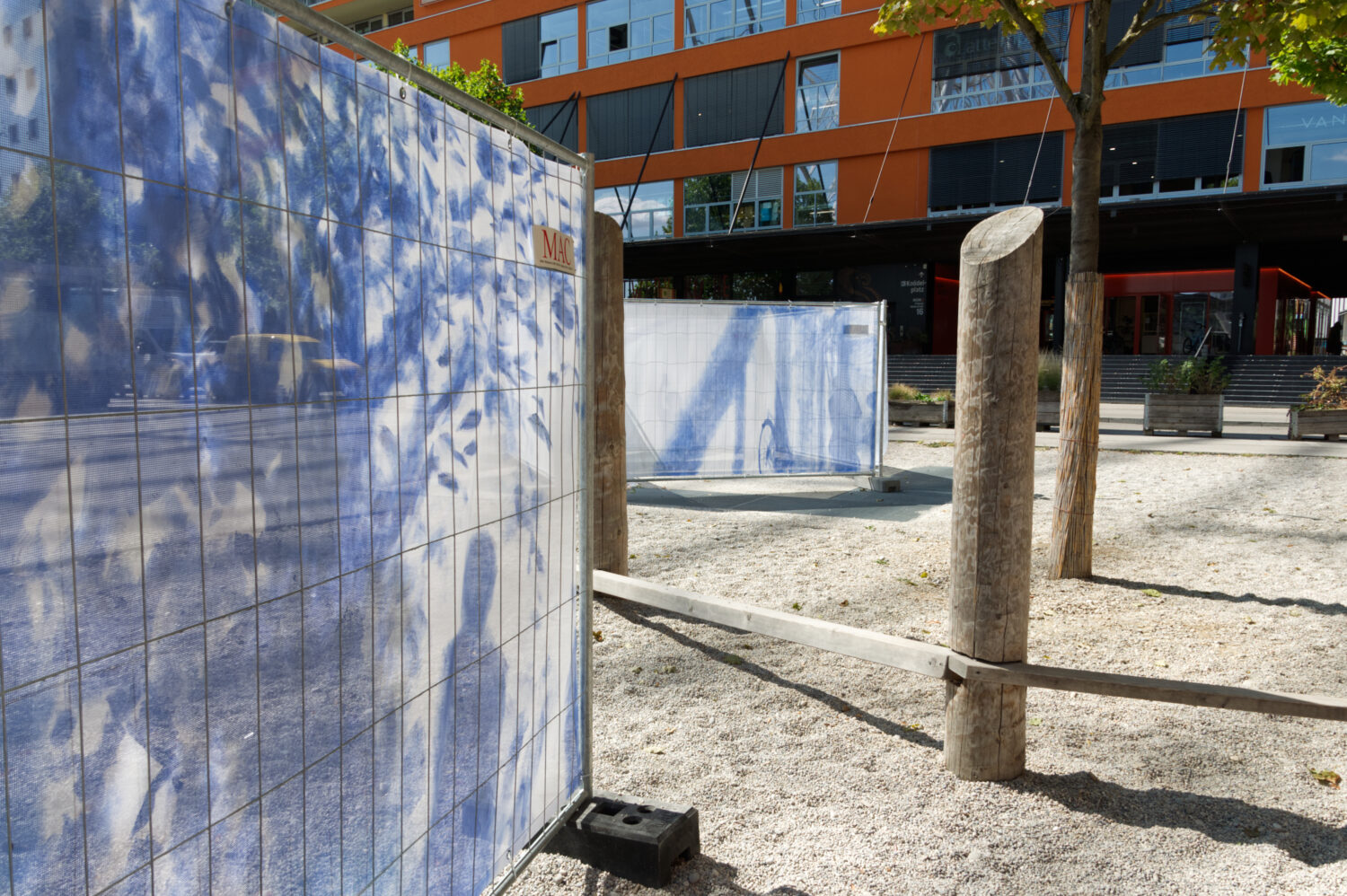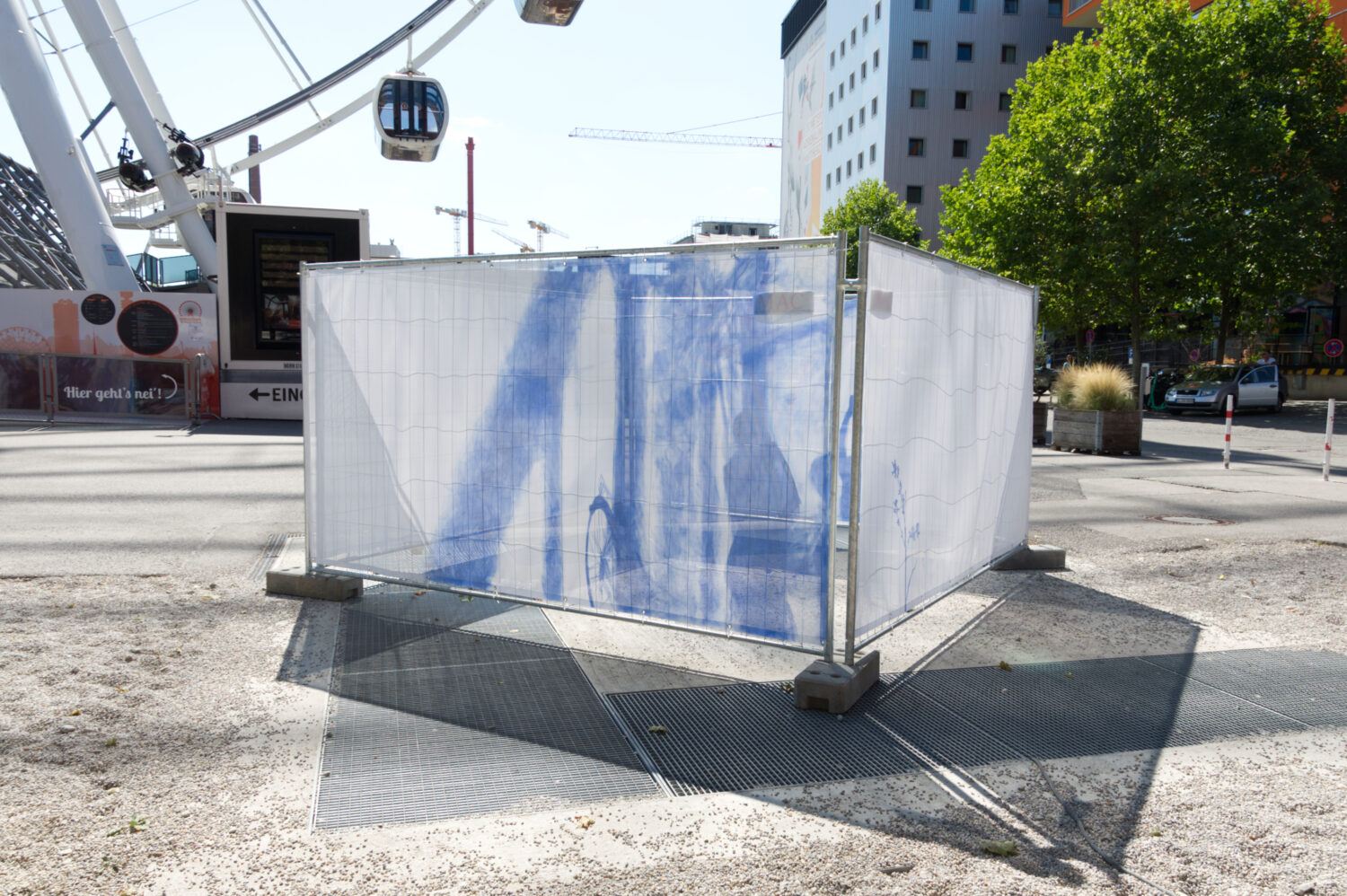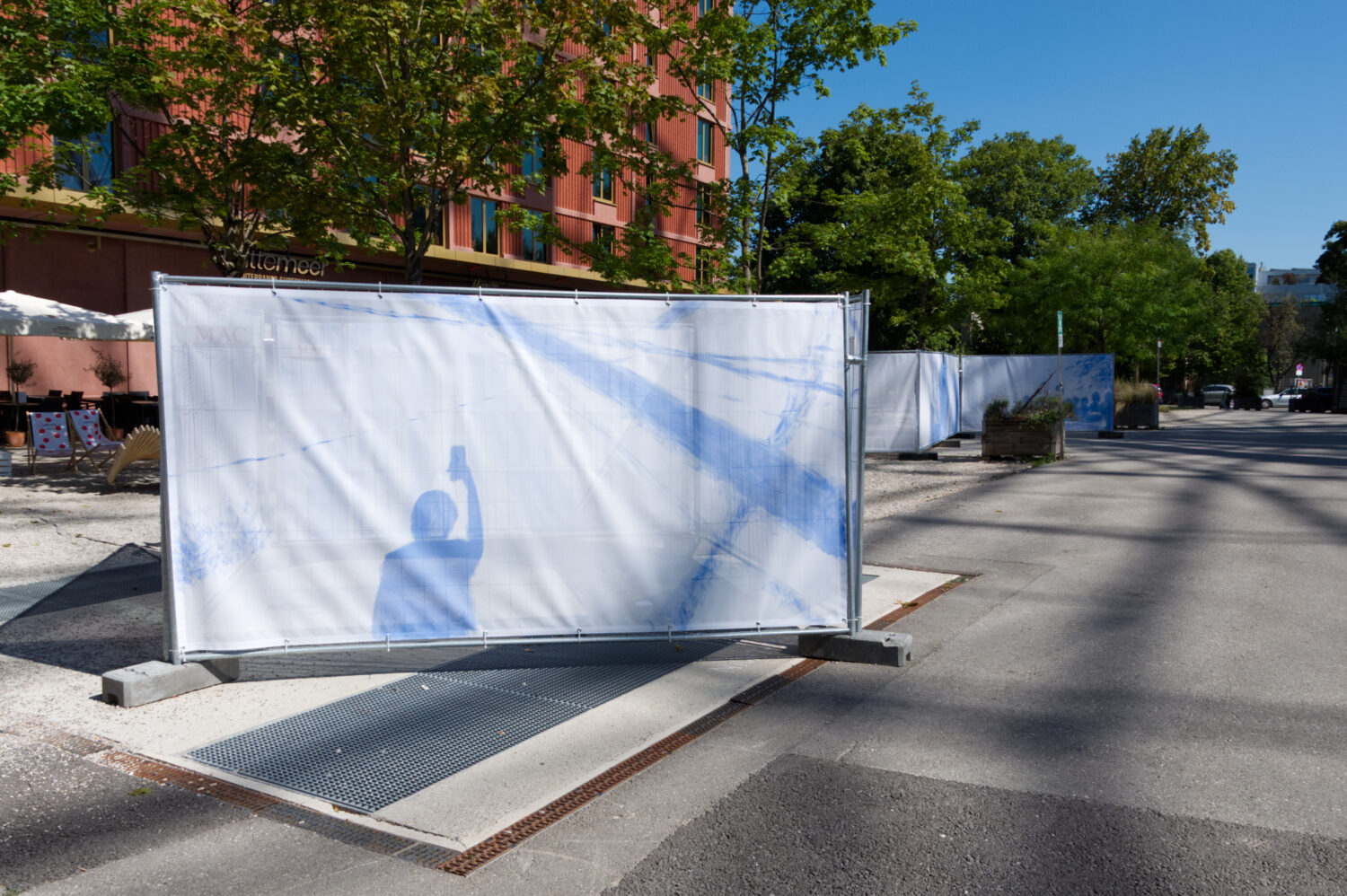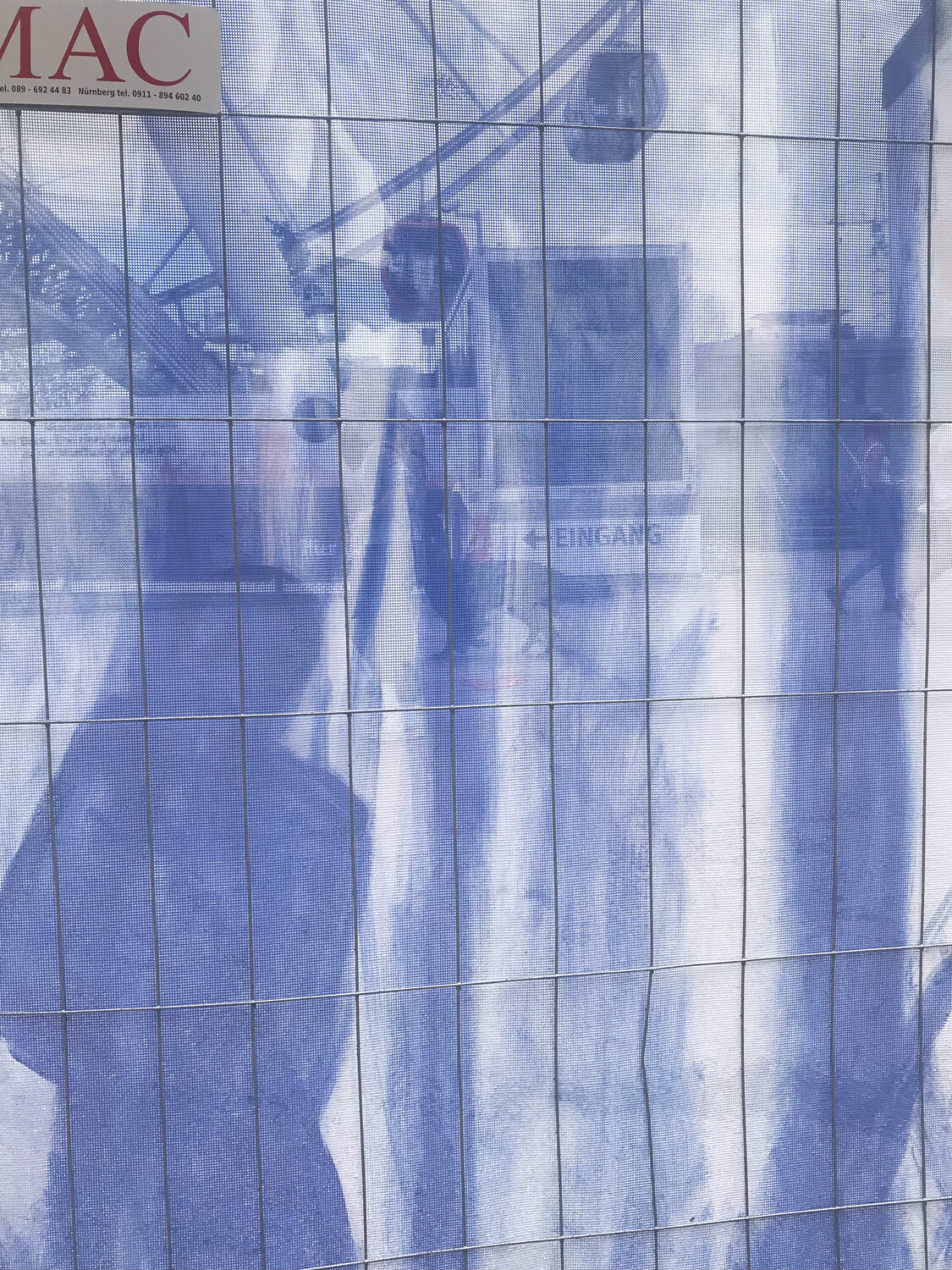Als Teil der Ausstellung „Spek/trum – Die Stadt als Resonanzkörper“ unterteilen Bauzäune, bespannt mit weißem Mesh-Banner, den Maris-Jansons-Platz im Werksviertel Mitte in München. Sie thematisieren das stets Definierte im öffentlichen Raum und machen vermeintliche Grenzen sichtbar. Durch das fast zufällig wirkende Arrangement auf dem Platz geben sie aber auch Räume frei; wo die Zäune hier als Barriere im Weg stehen, funktionieren sie dort gar als Schutz und eröffnen den Sitzenden eine Privatsphäre.
Einerseits sind die Bauzäune Objekte im Raum, die diesen neu ordnen, andererseits werden sie zum Bildträger. Natürliche Schatten fallen darauf und wandern weiter. Gleichzeitig sind die Mesh-Banner partiell beidseitig mit blauen Schattenformen bemalt. Es sind genau solche Schatten, wie sie dort auch vorkommen können: das flirrende Spiel der umstehenden Bäume, menschliche Figuren oder die Kabinen des Riesenrads. Die Zaunteile spiegeln so gewissermaßen den Raum und das Leben drumherum wieder und laden ein, selbst Teil davon zu werden und seinen eigenen Schatten zumindest für einen kurzen Moment darauf zu werfen.
As part of the exhibition “Spek/trum—Die Stadt als Resonanzkörper,” the Maris-Jansons-Platz in the working district Mitte in Munich is divided by construction fences covered with white mesh-banners. They thematize what is constantly defined in public spaces and bring to light what are considered to be borders. Through the seemingly almost random arrangement of the fencess on the city square, however, they also open up spaces. Whereas here the fences stand in the way as barriers, there they even have a protective function and create a sphere of privacy for the sitting persons.
On the one hand, the construction fences are objects in a space which they rearrange; on the other hand, they are image carriers. Natural shadows fall on them and wander further. At the same time, both sides of the mesh-banners are partially painted with blue shadow-shapes. These are shadows exactly like the ones which can also actually appear there: the flickering play of the surrounding trees, human figures, or the compartments of the huge Ferris wheel. So in a certain sense, the parts of the fence reflect the space and the life within it even as they issue an invitation for people to become part of the construct and to cast their shadow onto it, at least for a brief moment.
